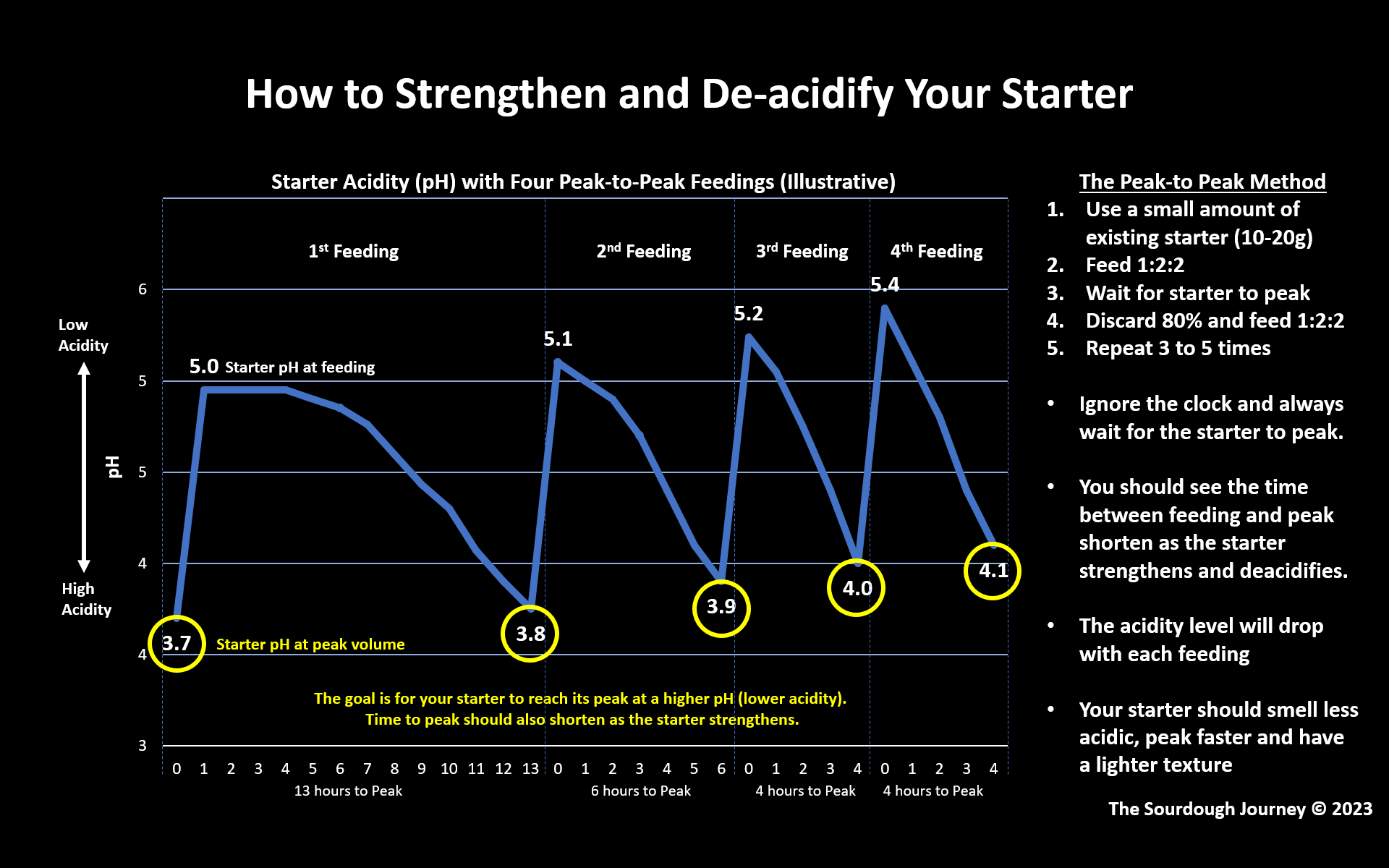The science behind the "peak-to-peak" feeding method
What is the Science Behind the Peak-to-Peak Feeding Method
By Tom Cucuzza, The Sourdough Journey © February 2024
The Peak-to-Peak feeding method is a technique for reducing the acidity of a weak, acidic sourdough starter. It is accomplished by discarding and refeeding your sourdough starter as soon as the starter peaks, with three to five short-interval feedings.
The Peak-to-Peak Method
To deacidify your starter, you will use the “Peak-to-Peak” feeding method for 3 to 5 feedings over a few days. With the Peak-to-Peak method, you ignore the clock, watch your starter’s activity, then discard and feed your sourdough starter as it is peaking. The interval between feeding and peaking should shorten as the starter strengthens so it is impossible to establish a fixed feeding time (e.g., every 12 hours) with this method.
I also recommend using very small quantities of starter in this method, because most of it will be discarded.
- Feeding #1 – Take a small amount of your existing starter (10g) and feed it 2x flour (20g) and 2x water (20g). This is a 1:2:2 feeding.
- Wait for Peak #1 – Watch and wait for your starter to peak. Your starter will peak more quickly if it is warm, versus cool. There is no benefit to warming up the starter to try to get it to peak faster. You can warm or cool your starter to fit the feeding times into your schedule, if necessary, but warming or cooling your starter has no material impact on its strength. For the first few feedings, I will sometimes put my starter on a warming mat at 80F/27C, just to speed up the first few feedings so I can hopefully do three rounds on the first day. Never let your starter temperature get above 85F/29C.
- Peak #1 – When your starter peaks in height or bubble activity, discard 80% (retain 10g), and feed 1:2:2 again (20g flour and 20g water). It is important to wait for the peak, then dis
- card and refeed at peak, or slightly after.
- Repeat this process three to five times over a few days (or longer if your starter is sluggish and/or your kitchen is cold).
With each successive discard and refeeding, keep track of the time it takes for your starter to peak. As your starter strengthens and deacidifies, you should see the time to peak becoming shorter.
Here is an actual example of four peak-to-peak feedings You can see the time to peak shortened with each feeding, and the pH increased (lowering the acidity) with each feeding. 
Copyright 2024 (c) The Sourdough Journey
